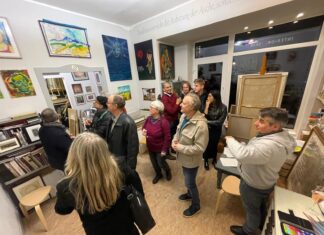ISTANBUL (PanARMENIAN.Net) — The 14th Istanbul Biennial, titled “Saltwater: a Theory of Thought Forms,” opened last week amid calls for all participating artists to suspend their work for 15 minutes in support of Turkey’s Kurdish minority, The Art Newspaper reports.
A ceasefire between Kurdistan Workers’ Party (PKK) and the Turkish government broke down in August, sparking the latest wave of violence in a decades-long battle.
No action has been taken so far, but the missive, signed by the Mardin-based biennial participant Pelin Tan and her ArtikIsler Collective, along with the artist and editor Anton Vidokle, reflects the politically sensitive program of this year’s biennial.
Most notable is the focus on Armenia and the Armenian Genocide, an atrocity not recognized by the Turkish state. At the press opening on September 2, Carolyn Christov-Bakargiev, the curator of this year’s biennial, said it was “very timely” to speak about what happened 100 years ago, as well as the “traumas and ethnic cleansing” that has occurred in other parts of the world throughout history, including Australia, Syria, Poland and Germany.
In what Christov-Bakargiev described as a “diplomatic act,” the Dilijan Art Initiative, which sponsored the Golden-Lion winning Armenian pavilion at the Venice Biennale this year, is supporting 13 artists in Istanbul who are either Armenian, of Armenian descent or have made works relating to Armenian history.
They include the Modernist painter Paul Guiragossian, who was born to survivors of the Armenian Genocide and has 14 works on show at Istanbul Modern. A self-portrait from 1948 bears witness to Guiragossian’s itinerant life: a shell destroyed the artist’s Beirut studio in the 1970s, damaging many canvases. The self-portrait was repaired, but the scar across his cheek remains.








